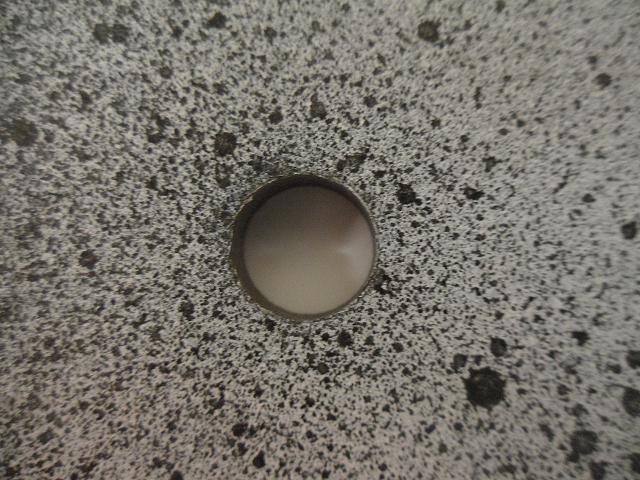|
Supervisor: Gary S. Schajer Renewable Resources Laboratory |
 |
Background
Modern railways are constructed with Continuous Welded Rail (CWR) to enable smooth and reliable train operation. With this construction type, the rail is attached securely to the ballast or other foundation and is thereby constrained to maintain a constant length, independent of temperature or track structural changes. In cold weather the track seeks to contract, but due to the foundation constraint, tensile forces are developed in the track so as to maintain the original length. In extreme cases, the tensile forces can be large enough to cause rail fracture. Conversely, in warm weather compressive forces are created as the constrained track seeks to expand. In extreme cases, the compressive forces can be large enough to cause rail buckling and ballast failure [1].
Rail buckling can cause substantial damage. Over the past 40 years, buckled track has caused oan average of more than 50 derailments a year in the US [2]. These are serious consequences by themselves, but become even more serious if they cause human injuries/fatalities or if they involve hazardous cargoes. For example, in a tragic incident on July 4, 2012, a buckled track in Northbrook, Ill. caused 31 loaded coal cars on a Union Pacific Railroad train to derail on a trestle, destroying the bridge and falling onto the roadway below, killing two people [2].
To allow continuous welded rails to function effectively, it is important to adjust their internal forces to be in a safe range such that they are not too highly tensile in the winter or too highly compressive in the summer. The Rail Neutral Temperature is defined as that temperature at which rail internal forces are zero. This should be within the seasonal range of temperatures experienced by the track, closer to the summer highs so as to limit the associated compressive stresses, which are particularly damaging. Typical target neutral rail temperatures range between 25-45°C, depending on local climate.
There are several methods used to measure rail neutral temperature, including:
- Cut the track and measure the force required to return the rails to their uncut stress state. This gives a fundamental measurement, but is very costly and time consuming.
- Unclip a section of track and measure the lateral stiffness. More practical than the track cutting method but still rather costly and time consuming, and is only possible when the track is in tension.
- Use strain gauges to monitor rail strains. Costly to install and difficult to establish the reference temperature datum.
- Measure the vibration/acoustic characteristics of a rail section. The method is sensitive to rail fastening conditions, causing tie-to-tie measurement variations.
- Measure response to ultrasonic guided waves. Requires measurements at several different rail temperatures and requires the rail to pass through the neutral temperature before it can be discovered.
- Measure magnetic permeability of rails. Requires extensive calibrations for each rail type.
All measurement methods have some good features, but all have significant concerns. Certainly, there remains an important need for a more practical and convenient measurement approach. As quoted by the United States Department of Transportation, “To date, a non-destructive, accurate, and easily deployable longitudinal force measurement system, either vehicle or track borne, is not available, making the development of CWR force measurement a major worldwide research need” [3]. The measurement system under development here is aimed to meet that need.
Measurement Concept
The measurement concept here is to apply a modified version of the hole-drilling method, commonly used to measure residual stresses in materials. Residual stresses are stresses that are locked-in within a material and exist without the application of external loads. They are typically created during manufacturing processes such as welding, casting and forming. The stresses that exist in continuous welded rail also behave as residual stresses because they exist without any external loads. Thus, the hole-drilling method is well suited to their measurement. The proposed measurement method is as follows:
- Apply a random speckle pattern on the web of the rail at the measurement location.
- Take an initial photo of the speckle pattern.
- Drill a hole approximately 1.5cm (5/8”) diameter in the rail web.
- Take a second photo of the speckle pattern. This will be slightly different than the first photo because of the small local deformations caused by the stress relief around the hole.
- Use Digital Image Correlation (DIC) to determine the local material deformations around the hole. The sizes of these deformations depend on the stresses within the rail.
- Calculate the stresses within the rail and hence the rail neutral temperature based on the DIC results. This calculation automatically takes into account the current rail temperature.
Some variations on this basic method are also useful. For example, if the rail neutral temperature needs to be monitored at a future time, then the original initial photo and the hole can be reused and only a further second photo need be taken. No new hole is required. This makes subsequent measurements very fast, taking around a minute to locate the camera at the hole and take a photo. This idea can be extended to the installation of new rail where holes can be pre-drilled at planned measurement points and the initial photos can be taken before track construction.
Progress
Work is presently underway to develop a portable device for field use to measure the stresses and neutral temperature in railway rails. The device will have a robust drilling head sufficient to cut up to 15mm diameter holes in a controlled way. It will also include a precision camera system to image the material around the hole location both before and after hole drilling. Finally, a practical computer software will be developed to do the required DIC computations and to evaluate the corresponding local structural stresses and residual stresses.
Significance
When compete, the DIC sensor will enable rapid and practical rail neutral temperature measurements in working tracks. The sensor will be a valuable maintenance and diagnostic tool to monitor and allow regulation of rail neutral temperature so as to minimize the occurrence of track damage during environmental temperature extremes. This will significantly promote rail system reliability and safety.
Literature Cited
- “Track Buckling Research”. Volpe, The National Transportation Systems Center, U.S. Dept of Transportation.
- “Derailments May Increase as ‘Sun Kinks’ Buckle Tracks”. GeoEngineering Watch.
- Kish, A. and Samavedam, G. “Track Buckling Prevention: Theory, Safety Concepts, and Applications”. U.S. Department of Transportation, Federal Railroad Administration, Report DOT/FRA/ORD – 13/16, 2013

